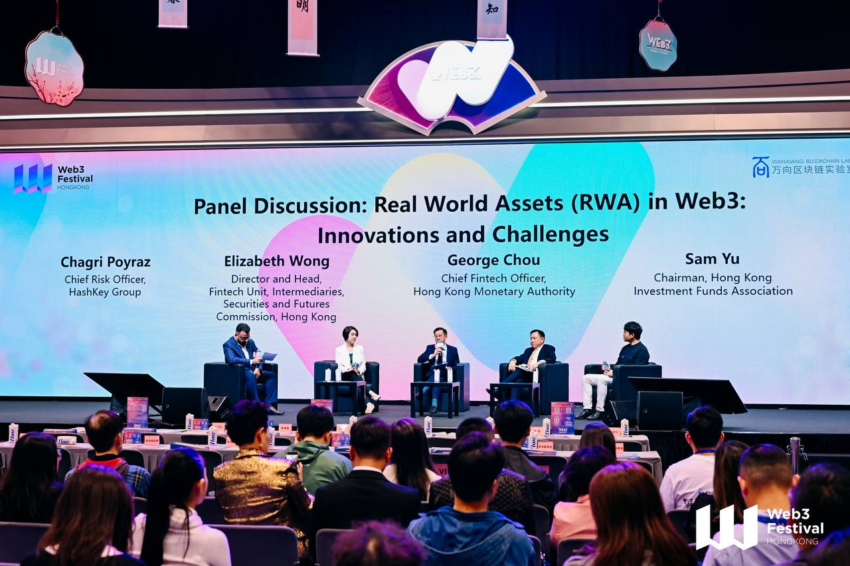-
Real World Asset tokenization is transforming the blockchain landscape, promising increased efficiency and user adoption across various sectors.
-
Recent developments in Hong Kong demonstrate a proactive approach by regulators to foster innovation while providing clear guidance in this rapidly evolving space.
-
“This represents a critical shift,” observed Shukyee Ma, highlighting the growing interest in tokenized assets as a response to changing market dynamics.
Explore how real world asset (RWA) tokenization is bridging finance and blockchain, and fostering innovation in Hong Kong’s burgeoning crypto landscape.
Purpose-Built Blockchains Leading the Way
A key trend emerging from the discussions is the development of purpose-built blockchains specifically designed for RWAs, rather than using existing general-purpose chains. This approach promises to enhance operational efficiency.
“All those public chains are not built for RWA protocols,” explained Ma. “That’s why we build this RWA chain and put DeFi composability on top of it to make it easier for crypto users to adopt.” Through dedicated systems, businesses can better support specific use cases.
“Over the next 10 years we’re going to see a lot of existing fungible assets coming on chain—US treasuries, sovereign bonds, equities,” predicted Jayant Ramanand, Co-founder of MANTRA. “As these assets come on chain, you’ll have fungible, movable value that can be transferred across the world instantly.”
Regulatory Challenges and Opportunities
Industry professionals identified regulatory certainty as vital for widespread adoption of RWA tokenization. Clarity in regulations can bridge gaps between traditional finance and decentralized innovations.
“In order to further unlock the potential of this technology and encourage traditional finance to adopt it, we issued circulars to provide guidance,” said Elizabeth Wong, Director of Fintech at Hong Kong’s Securities and Futures Commission. “We maintained it to be agnostic to the technology used, as each blockchain has its benefits and limitations.”
Vivian Mei, a lawyer specializing in RWA compliance, noted the importance of convergence in regulations globally: “The overall regulatory landscape is moving toward high convergence in terms of virtual asset definitions, KYC requirements, and compliance standards.” Clear frameworks can stimulate investment and innovation.

George Chou, Chief Fintech Officer at Hong Kong Monetary Authority, highlighted the importance of collaboration through their Project Ensemble initiative: “We want to explore an innovative market infrastructure with the industry to facilitate settlement using tokenized money, and identify impactful domestic and cross-border use cases with leading experts and industry pioneers.” This initiative aims to harmonize efforts towards efficient settlement mechanisms.
Bridging Traditional Finance with Crypto
“It’s not just simply bringing offline assets on-chain. It’s providing a structural change in how the real world and virtual world connect,” stated JJ from The PAC, whose platform recently tokenized a quantitative fund valued at approximately $100 million. This reflects a broader trend in integrating traditional assets into blockchain frameworks.
While financial assets will stimulate early adoption, Rachel Keum, CEO of VaultX, offers a different perspective with her platform that tokenizes art assets using NFC technology: “Our mission is to revolutionize RWA ownership by empowering digital-illiterate creators and collectors to unlock new value in the digital economy.” VaultX has formed strategic partnerships with galleries across Asia and Europe to build a decentralized marketplace for artists.
Consumer-focused applications are also emerging within this ecosystem. “The real distribution is never for institutional investors—it’s for the people,” claimed EudemoniaCC from Morph, whose Black Card initiative gained quick popularity. “We’re trying to put payment and consumption at the center, letting people spend their crypto assets in the real world while bringing new audiences into the ecosystem.” This shift indicates a growing consumer interest in facilitating everyday transactions with crypto.
Conclusion
In summary, real world asset tokenization represents a significant evolution in the intersection of blockchain technology and traditional finance. With dedicated innovations gaining traction and regulatory clarity emerging, the landscape is poised for substantial growth. Industry leaders agree that the next few years will be critical in determining how RWAs can reshape financial markets, providing both challenges and opportunities.
